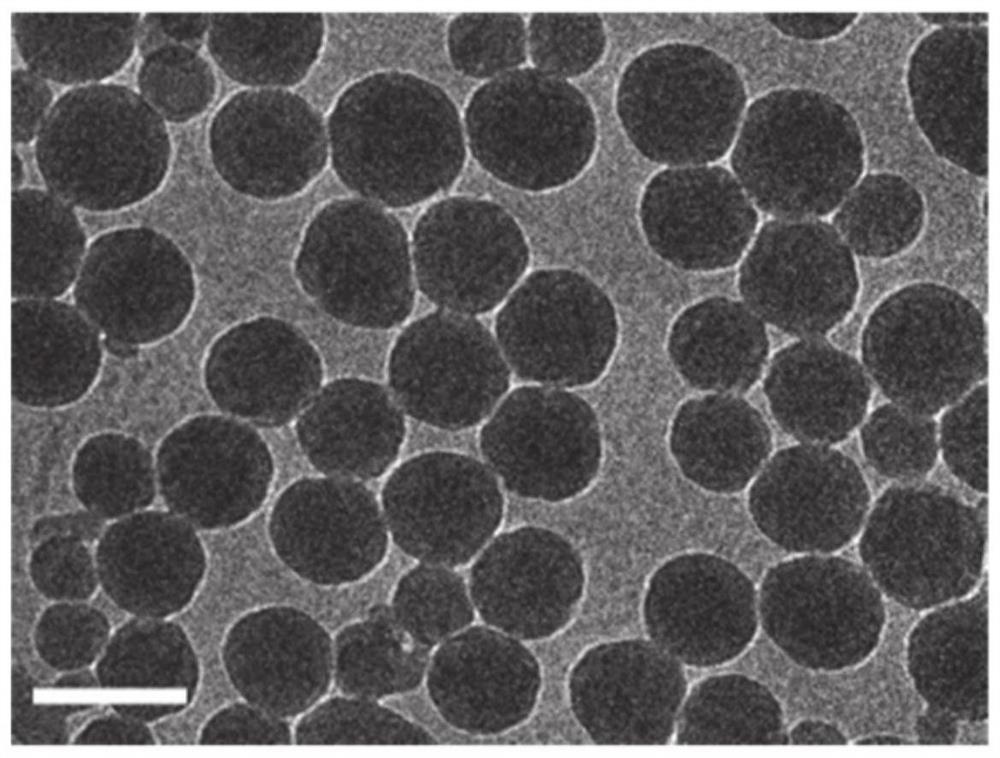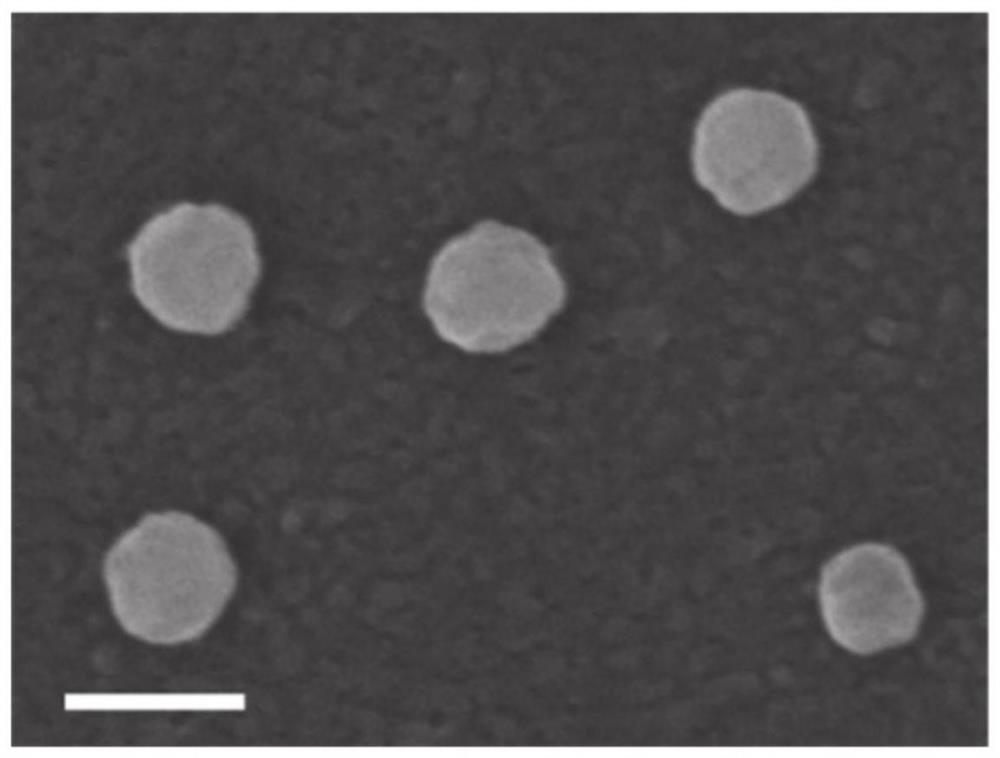Carrier-free self-assembled nano particle as well as preparation method and application thereof
A nanoparticle and self-assembly technology, applied in the field of biomedicine, can solve the problems of poor biocompatibility and stability, complicated and tedious preparation process, and inability to take effect on remote tumors, and achieves high stability of the drug, efficient enrichment, good The effect of in situ tumor clearance
- Summary
- Abstract
- Description
- Claims
- Application Information
AI Technical Summary
Problems solved by technology
Method used
Image
Examples
preparation example Construction
[0038] The second aspect of the present invention provides a method for preparing carrier-free self-assembled nanoparticles, comprising: dissolving a photosensitizer and an imidazoquinoline agonist in an organic solvent respectively, adding water after mixing, continuing the reaction, and centrifuging.
[0039] The photosensitizer and the imidazoquinoline agonist are mixed in an organic solvent, and then the mixed solution is added into water to assemble.
[0040] In some existing carrier-free nanoparticles, chlorin needs to be alkalized first, and then self-assembled with chemotherapy drugs. The preparation method is complicated, and it cannot act on distant tumors.
[0041] In some embodiments of the present invention, photosensitizers and imidazoquinoline agonists are dissolved in organic solvents, and the existence of non-covalent bond electrostatic interaction and hydrophobic interaction / π-π stacking between molecules inside the particles maintains a good relationship betw...
Embodiment 1
[0057] Embodiment 1: the preparation of nanoparticle
[0058] The preparation method of chlorin and Toll-like receptor agonist nanoparticles (Ce6-IMDQ NPs) is as follows:
[0059] (1) Accurately weigh a certain amount of Ce6 with an analytical balance, and disperse it in dimethyl sulfoxide (DMSO) to make a 5 mg / mL solution. A certain amount of IMDQ was weighed and dispersed in dimethyl sulfoxide (DMSO) to make a 2 mg / mL solution. The two were mixed in equal volumes, and the mixed solution was added dropwise to 1 mL of water under rapid stirring, and the stirring was continued for 5 minutes.
[0060] (2) After the reaction, the mixed solution was centrifuged (10,000 g, 5 min), and the operation was repeated 3 times. After each centrifugation, 1 mL of ultrapure water was added to remove unreacted substances, and the nanoparticles were obtained after sterilization.
Embodiment 2
[0061] Embodiment 2: Characterization of the physical and chemical properties of nanoparticles
[0062] The UV spectrum was measured with a UV-Vis spectrophotometer (Shimadzu, UV-2600). The morphology of nanoparticles was characterized by transmission electron microscope (TEM, JEOL JEM-1400) and scanning electron microscope (SEM, Carl Zeiss G300). The result is as Figure 1-3 As shown, the prepared nanoparticles are regular in shape and uniform in size, and the particle size is about 180nm. The ultraviolet spectrum confirms that the nanoparticles are assembled by two small molecule drugs.
PUM
| Property | Measurement | Unit |
|---|---|---|
| particle diameter | aaaaa | aaaaa |
| particle diameter | aaaaa | aaaaa |
Abstract
Description
Claims
Application Information
 Login to View More
Login to View More - R&D
- Intellectual Property
- Life Sciences
- Materials
- Tech Scout
- Unparalleled Data Quality
- Higher Quality Content
- 60% Fewer Hallucinations
Browse by: Latest US Patents, China's latest patents, Technical Efficacy Thesaurus, Application Domain, Technology Topic, Popular Technical Reports.
© 2025 PatSnap. All rights reserved.Legal|Privacy policy|Modern Slavery Act Transparency Statement|Sitemap|About US| Contact US: help@patsnap.com



